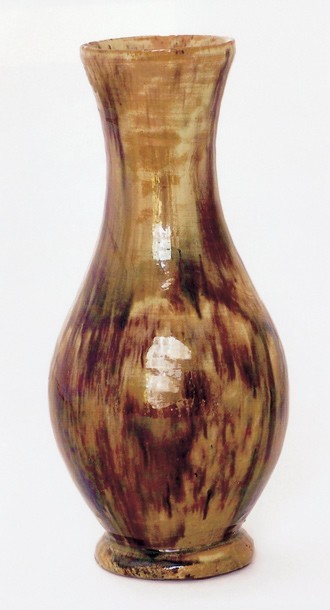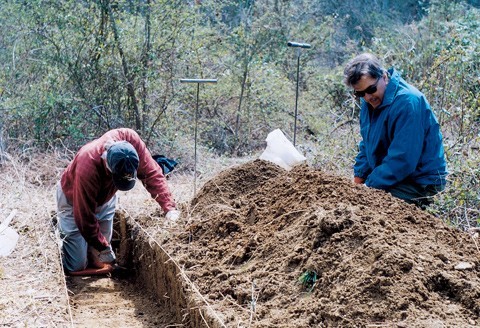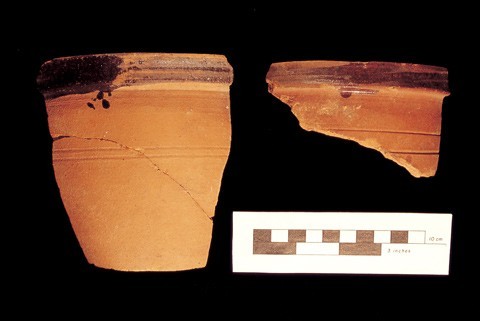
Goat, Anthony Baecher, ca. 1880. Lead-glazed earthenware. H. 6 7/8". (Courtesy, American Folk Art Museum, promised gift of Ralph Esmarian; photo, John Bigelow.) This figurine exhibits Baecher’s command of glazes by using manganese over slip. Marked three times: BAECHER/WINCHESTER VA.

Vase, Anthony Baecher, Winchester, Virginia, ca. 1865–1880. Lead-glazed earthenware. H. 9". (Courtesy, Dr. and Mrs. George E. Manger Collection.) This vessel demonstrates his striking glaze eVects resulting from the use of manganese, copper, and lead oxides over a slipped engobe. Stamped twice: BACKER.

David Hazzard (left) and Gene Comstock completing the 3.5 x 0.5 m trench at the site of the Baecher Shop, Frederick County, Virginia. (Photo, Christopher T. Espenshade.)

Storage jar fragments, Anthony Baecher Shop, Frederick County, Virginia, 1864–1889. Lead-glazed earthenware. (Photo, Alain C. Outlaw.) These fragments are characteristic of Baecher’s lesser-known utilitarian vessels. The rims are squared on the exterior, and the interior glazes are dark brown to black. Note the sandy texture of the unglazed exterior.
